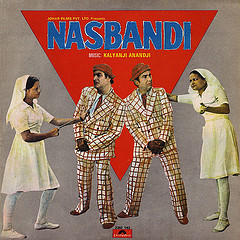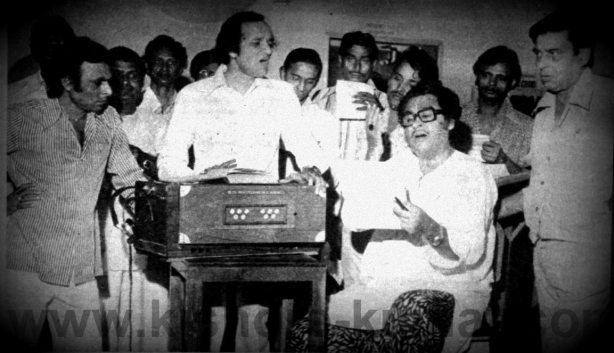It is brutal watch. Yeah, that’s the actual statutory warning, but we are all old enough for it, right? The reason I am writing about Reason is because there is every reason for all of us to be talking about the exact same things as the film.
First off, this is not a review – cute things like ‘reviews’ don’t matter to films like these. Anyways, it isn’t the film that needs a review, the country does – the truths it challenges are so stark. It lays bare in no uncertain terms the clear divide between (religious) rhyme and (democratic) reason, literally and figuratively.
If this film is shown in the beginning of every movie instead of the national anthem, people may not start feeling more patriotic about the country, but at least they will be sensibly patriotic. Since, it has 16 chapters of almost 15 min each and you may not have so much time so here is an abridged summary and highlights, with some personal commentary to keep the truth going. You tell someone else about it, and it will spread. Hopefully, we will come back from the brink of the abyss staring at us, in time. (Also, watch the entire thing first.)
Chapter 1 – Dabholkar & Chapter 2 – Pansare
https://www.youtube.com/watch?v=IX2ZeG3szQ4
https://www.youtube.com/watch?v=osrfRS364yg
The film doesn’t waste time coming to the point, it starts from the centre, from the Dabholkar, Pansare & Kalburgi murders and the entire film is interspersed through with their thoughts. Who killed them is a moot point here (also coz everyone knows), more important is the question – Why were they killed? They were killed because they empowered the marginalised classes through reason and reason, as we all know, does not rhyme. Reason sings no one’s tunes.
Chapter 3 – Shivaji
https://www.youtube.com/watch?v=YlSQe8XNT64
From the killing of rationalists, the film moves to investigating the killing of rationality. It throws spotlight on the fractured as well as manufactured history surrounding the Maratha King Shivaji, while taking pains to separate fact from fiction. It also throws a spotlight on the hard-core elements manufacturing this history for their own benefit, and widely poisoning the Hindu-Muslim and ‘nationalist’ narrative.
Chapter 4 – Virasat
https://www.youtube.com/watch?v=StYIx1rEL6o
After setting the stage, the film quickly comes back to talking of the legacy left behind by Dabholkar and Pansare; it takes us right inside the minds and hearts of people these men have touched, classes that are the bedrock of our society, traditional as well as modern. It instils hope. The film also touches upon how society is being influenced artificially and pressured directly by those who demand a Hindu rashtra.
Chapter 5 – Sanatan
https://www.youtube.com/watch?v=WgGcE3EYXQ4
Chapter five takes us directly into the womb of the problem, Sanatan Sanstha located in Goa. Founded by Jayant Balaji Athavle, the organisation diligently works towards achieving its dream of converting India into a Hindu rashtra, through planned terror activities. There is strong opposition to their activities and existence right in the village of Ramnath, where it is located, from the local Goan people. The local people want to live peacefully in their diversity without the Sanatan Sanstha.
(Caution: The parts with the kids in Sanatan Sanstha fooatge is very creepy. Watch at your own risk.)
Chapter 6 – Ganpati
https://www.youtube.com/watch?v=hLccwS7WWBs
The film then goes to uncover the politics behind religious festivals and how they are used for spreading propaganda by political parties and religious groups. Dabholkar and Pansare both had questioned the environmental impact of the unchecked Ganpati celebrations in Maharashtra. The film keeps questioning their murders. Maybe, we must too.
(Watch out for – The part where the lawyer chap defending the accused in Malegaon blasts telling Patwardhan, on camera, ‘Why did the police allow Anand Patwardhan to protest? Why didn’t they break his bones? When that happens, one feels angry.’ Waah re, democracy.)
Chapter 7 – Shital
https://www.youtube.com/watch?v=9y3u_Xv-UbM
After zooming out, the film zooms into the microcosm of the Sanatan Sanstha, and its efforts to divide India not only along communal lines, but also casteist lines. Dabholkar, Pansare, Kalburgi’s words keep stitching the narrative forward and the section ends with a beautiful tribute song to the three men.
(Must think about – The Haji Ali protests section where Hindu and Muslim suddenly become one against a single enemy, the woman. Think, think hard. Or laugh.)
Chapter 8 – Dadri
https://www.youtube.com/watch?v=7N-OCBEwzVY
This is the toughest to watch and that’s why the most necessary. The Dadri beef lynching episode is like a wound on the nation’s conscience we can neither heal from, nor move on from. But the quiet assurance in Akhlaq’s young, very old son is a balm. If he can still see a better India and work for it, so can we.
(Keep calm – At the end when the father of one of the lynchers justifies the lynching and when challenged that the Govt investigation found no beef ends with a ringing and profound, ‘How can we believe?’ Breathe. Think of how Dadri was and still wants to live in peace and brotherhood.)
Chapter 9 – Cow Dalit
https://www.youtube.com/watch?v=PGsdXSeDaW8
The spotlight travels to Una, where gau-rakshak terrorism reached new lows in July 2016. The section begins with the actual footage of dalits being flogged and it’s cruel (and if that doesn’t make you angry, just stop. And retire, from life). But the film captures very nicely the heartening spirit of the Una ‘uprising’. The marginalised must rise up and claim their space. Also Modiji has ensured Muslims join the Dalits in Gujarat, and there is hope. There is always hope.
(Check out New India – The last five minutes – the four injured dalits in the hospital saying none of them is scared anymore, it is a fight for justice. And Akhlaq’s son.)
Chapter 10 – RSS
https://www.youtube.com/watch?v=Oe2JPn354Qw
And now we come to the point of the whole matter, RSS. The organisation that killed Gandhi. The film takes us through its diligent training camps and takes head-on some of its rather brainwashed foot soldiers. It is a whether-to-laugh-or-cry moment. (But there is a one-liner gem there to deal with a bhakt, just ask him, ‘Who killed Gandhi?‘ and watch him disintegrate.)
(Must note – The Ram Mandir station maybe an imposition but there is still a Mahim a few stations down and a ‘Masjid’, on the other line. Let it come, in Bombay rush hour Hindutva won’t be able to survive beyond Andheri.)
Chapter 11 – Rohith
https://www.youtube.com/watch?v=KgCwRchxaMc
Rohith Vemula is not the wound of the nation, he is the test of the nation. And we cannot afford to fail that test, period. Through Vemula’s story, the film lets the dalits tell their story and follows it wherever it goes. About time, our nation began to do that as well.
(Must do – The last bit is an oral rendition of Rohith’s last letter. If you haven’t read it please listen to it.)
Chapter 12 – JNU A
https://www.youtube.com/watch?v=VyKU86Yerz8
Enter Kanhaiyya Kumar and although I cannot fault his politics or intentions, must say, his emergence and rise has always seemed more manufactured than organic. But the truths about our society and especially politics that his emergence lays bare are naked. The fake narrative of nationalism is fooling no one, especially not the youth.
(Check out New India part II – The two ex ABVP leaders who left the organisation on grounds of its regressive stands and political ideologies. They were thinking for themselves.)
Chapter 13 – JNU B
https://www.youtube.com/watch?v=KV7NGzyMo9o
Extended interviews with Kanhaiyya Kumar follow with a deeper look into the Hindutva menace. And perhaps significantly, it ends with a conversion ceremony of dalits into Buddhism, rejecting Hinduism saying, ‘I believe, I am being reborn.’ If Hindusim will reject them, what are they supposed to do?
Chapter 14 – Mush A
https://www.youtube.com/watch?v=G-YjfBj32Eo
This is when the ocean comes to the doorstep. The question, ‘Who Killed Gandhi‘ has now become, ‘Who Killed Karkare?’ and it hurts even more. Or rather it should. The film exposes the loopholes in ATS chief Hemant Karkare’s death and links to the Malegaon blast investigations and asks questions that have never been more urgent. Let’s ask them before Sadhvi Pragya becomes our Prime Sadhvi of 100% Pure Brahmin Hindu Ram Rajya. (It sounds like the name of some ghee, doesn’t it?)
Chapter 15 – Mush B
https://www.youtube.com/watch?v=ntfGxfn0Svw
The plot thickens and thickens and one just keeps swallowing the hopelessness of the same 80’s masala story of aam junta as well as upright officers victimised and exploited by powerful political forces. It’s like a potboiler seriously, a good old Sunny Deol film. We are back to the 80’s in 2019, some development for sure. Pansare had publicly claimed Karkare’s death was an organised conspiracy and the conspirators would be unmasked soon. He was killed too. The connections are ridiculously clear in this ‘we-all-know-who-dunnit-but-won’t-say-it’ not-thrilling-anymore, thriller that is more of a joke, our nation.
Chapter 16 – The end
https://www.youtube.com/watch?v=RUcM_B0m77U
The series comes to an end with a deeper look into the amazing amalgamation the establishment and hindu terror outfits have become and keeps raising that one seminal question to chest-thumping nationalists, ‘Who Killed Gandhi?’ The answer to that may lie in the question, ‘Do we want a Hindu Rashtra or do we want Freedom?’
There, there is a discovery of a New India in front of us. It is upto us what we do with it, take it or leave it. Its upto us, really. After all, it stands to reason.
 Emergency was imposed on India on this day 42 years ago, on June 25, 1975, and it lasted for about 21 months. During the emergency, Kishore Kumar was banned by Ministry of I&B on All India Radio & Doordarshan for his non-participation in one of the major public events organised by the people in power then.
Emergency was imposed on India on this day 42 years ago, on June 25, 1975, and it lasted for about 21 months. During the emergency, Kishore Kumar was banned by Ministry of I&B on All India Radio & Doordarshan for his non-participation in one of the major public events organised by the people in power then.
 One of our favourite books on cinema is
One of our favourite books on cinema is 
 Head constable Tambe isn’t having the best of days.
Head constable Tambe isn’t having the best of days.














